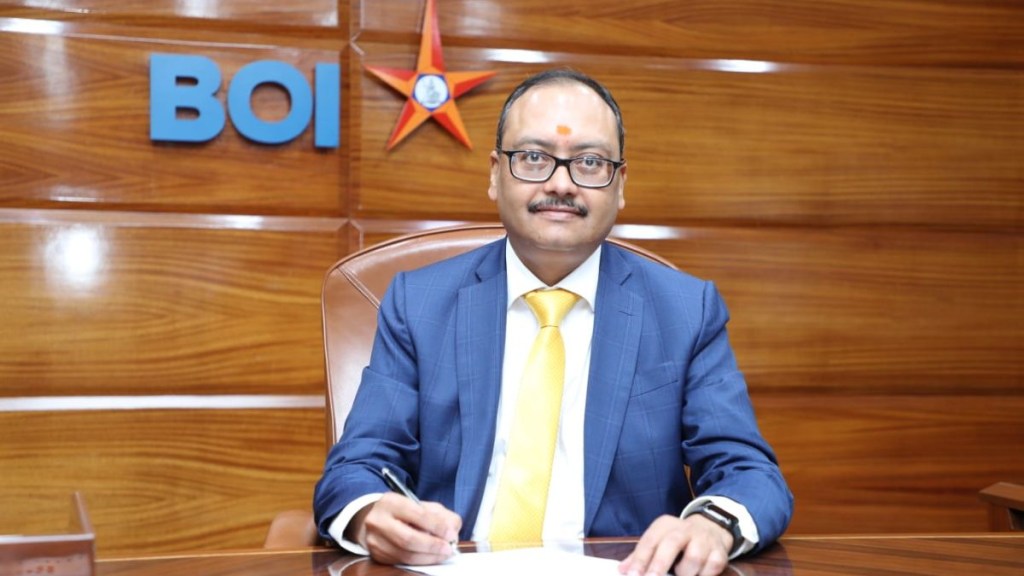Bank of India’s asset quality improved in the September quarter. Rajneesh Karnatak, MD & CEO, Bank of India, tells Mahesh Nayak a focused one-time settlement scheme, to drive swift resolutions across the MSME and retail segments, has been launched. Karnatak believes the proposed acquisition financing norms can unlock new growth levers. Excerpts:
The bank’s asset quality has improved with gross NPAs at 2.54% and net NPAs at 0.65%…
In the September quarter our GNPAs and NNPAs contracted by 187 bps and 29 bps y-o-y, respectively. The slippage ratio dropped to 0.14%, and recoveries were 1.6 times of fresh slippages. The SMA accounts above Rs 5 crore stood at just 0.89% of gross domestic advances. We have enhanced underwriting, deployed pre-delinquency models and set up 69 zonal collection centres to improve asset quality. Also, we have launched a focused one-time settlement scheme to drive swift resolutions across the MSME and retail segments.
Could you give us some colour on the corporate loan pipeline?
The corporate loan sanction pipeline is around Rs 60,000 crore with power, petroleum products, renewable energy and roads accounting for more than 50%. We are also focusing on data centres, logistics, and sectors eligible under the PLI scheme.
How will the ECL framework impact the bank?
A preliminary assessment indicates ECL implementation may impact CRAR by 0.60% to 0.75% annually. With CRAR at 16.69% and a projected FY26 net profit of Rs 10,000 crore, internal accruals are expected to fully offset this impact, ensuring an adequate capital buffer and a smooth transition to the new provisioning framework.
What is the strategy for acquisition financing, which sectors would it look at?
We are open to merit-based acquisition financing and aim to leverage our global footprint, including Gift City operations, to support strategic transactions and drive business growth.
How does the bank plan to improve the NIM which has contracted to 2.41%, considering the lagged repricing of deposits?
Our global NIM compressed due to the 100-bps repo rate cut since February. With 63% of our advances linked to the repo, loan repricing was swift, but deposit repricing lagged. We expect full transmission by December. To improve NIM, we are mobilising low-cost CASA deposits, expanding RAM and MCLR-linked advances, and have opened 20 emerging corporate credit branches. With these steps and the full transmission in Q3, we expect a progressive NIM improvement from Q4.
How does the bank plan to expand the MSME and retail credit portfolios?
During Q2, MSME credit rose 16.46% YoY, supported by new products, STP rollout for loans of up to Rs 1 crore, and a strengthened cluster-based approach. We are expanding supply chain finance and operate 138 MSME loan processing centres. Retail credit grew 19.96% YoY, driven by a focus on home, LAP, vehicle, education, and personal loans, strategic tie-ups and cross-sell initiatives.
Where are you witnessing the growth, domestic as well as global?
The bank has a robust pipeline exceeding Rs 70,000 crore, over 10% of it are global advances. Corporate credit contributes more than Rs 50,000 crore, while the RAM segment adds Rs 20,000 crore. The corporate book grew in double digits; RAM grew over 19%. RAM now forms 58% of the loan book. Growth is visible across retail, agriculture, MSME, and corporate.
How does the bank plan to maintain its capital adequacy ratio and enhance shareholder value?
The CRAR stood strong at 16.69% in Q2. We plan to raise Rs 5,000 crore through Tier I and Tier II bonds this fiscal. This, along with internal accruals, will strengthen our capital base.
What would be the key challenges and opportunities in the near term?
The bank is launching customer-centric products and leveraging its network. With 1,000 HNI-focused branches and rising consumption from tax reforms, it is well-positioned to capture growth through a strong advances pipeline and resilient strategies.
How do you manage the risks associated with loans against shares?
Considering the nature of the security, these are quite safe advances. The RBI guidelines to increase the per-borrower exposure cap present an opportunity to fund existing customers and acquire new ones.
What are bank’s key digital initiatives?
The digital transformation is led by the Omni Neo Platform, offering more than 400 services. With 24 digitised loan products and 13 straight through process, digital loans now exceed 20% of domestic advances. Project Star drives automation, API integration, and analytics, saving 33,000+ man-hours and enhancing efficiency, sourcing and underwriting.

